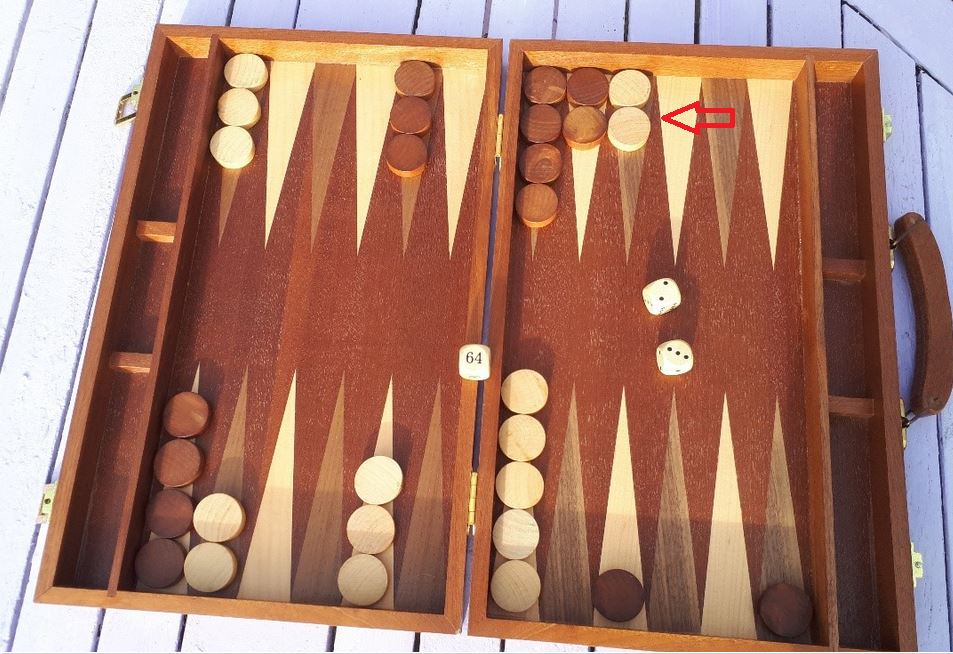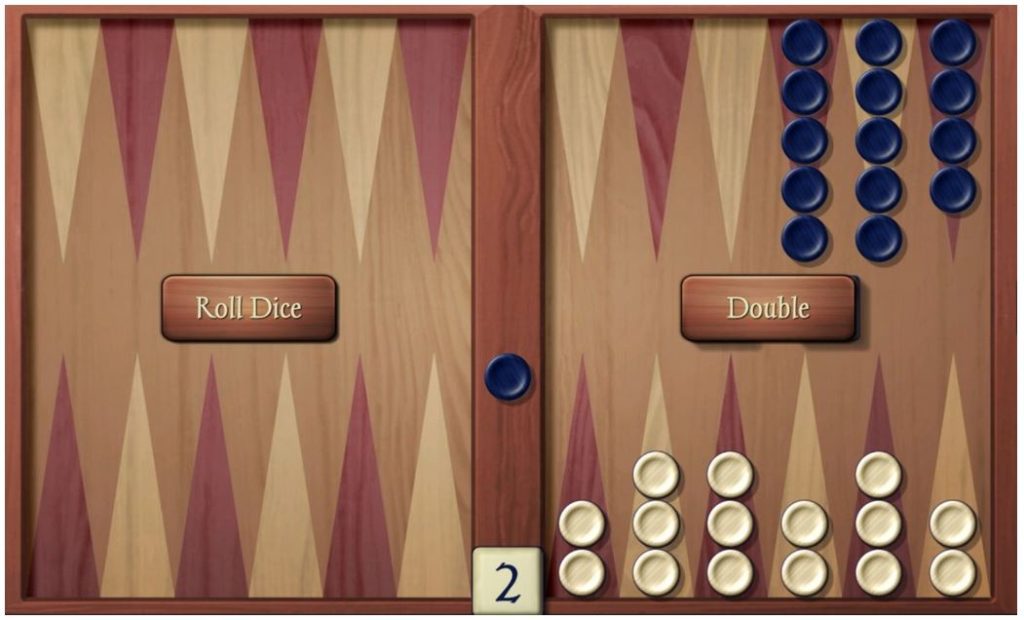Last updated on April 20, 2024
The ultimate goal of backgammon is to bear off all of your checkers before your opponent does. So, in essence, backgammon is a race. However, if backgammon was a pure race, then the result would be up to the dice and the result would be dictated by luck. This is simply not the case as it has been proven time and time again that backgammon is a game of skill. Luck certainly plays a part, but in the long run, the more skilful player will come out on top. Tactics and strategy are the elements of the game that help players overcome luck. Applying these correctly according to the state of play is a skill in itself. As the game progresses strategies and tactics must change to reflect the position of play. In this Deluxe Backgammon post for beginners, we will look at basic defensive play.
Early in the game, there are a number of tactical options to consider for each move. Hitting, slotting and splitting are generally considered offensive plays, particularly if you are targeting key points. However, there are also defensive options such as securing points and moving checkers to safe positions. Generally, if you can hit early in the early game, it should be the priority. The next priority is to secure key points such as the 5, 4 or bar-points. Finally, if you can’t hit or secure a point, it is generally best to play defensively and move checkers to a safe position. However, you should avoid the common beginner’s mistake of over-stacking points. Once a point has more than four checkers on it, you will start to lose flexibility as all of your material is concentrated.
Defensive strategies
There are several basic defensive strategies to consider in backgammon. The first defensive strategy is to secure points anywhere on the board. A secure point is occupied by two or more checkers of the same colour. These checkers are safe and cannot be hit, nor can the opponents land on the occupied point. This provides two distinct advantages, secure checkers and a barrier to your opponent’s pieces. Ideally, when we speak of defensive strategy, we want to position the secure points where they have the most impact on the opponent’s movement.
Securing points
There are preferred strategic locations to secure points. The first is in your home board, which would be considered an attacking play. The second is securing a point in your opponent’s home board, which is considered a defensive play. A secure point in your opponent’s home board is known as an anchor, which provides a safe place to land if you need to return from the bar. It also provides attacking alternatives as your opponent moves into their home board. The ideal anchors to secure are the opponent’s 5-point, 4-point, 3-point or sometimes the bar-point. Secure points in these locations are known as advanced anchors. Depending on the situation, at times, you may deliberately allow a blot to be hit, just so you can secure an anchor on re-entry. This would allow you to play a back game or holding strategy.
The easiest way of making points on the board is to roll a double. This obviously relies on the luck of the dice. However, the fastest way of securing points is by slotting checkers. Slotting involves moving a checker forward to the desired point with the intention of securing it on a subsequent roll. This leaves the slotted checker vulnerable to a hit from an opposing checker. Although risky, it is much faster than waiting for a lucky double roll. Higher risks should be reserved for more valuable positions, such as the 5-point.
Probability
An understanding of probability helps when deciding when and where to slot a checker. The chances of your blot being hit vary depending on how far it is from the opponent’s checkers. A direct hit is one where the blot can be reached on the roll of a single dice (1 to 6). An indirect hit is one that requires the total of two dice to hit (7 to 12). This means that at distances between 1 to 6, you are more likely to be hit than at distances greater than 6. On the other hand, at distances below 6, close is better than far off. The chances of a hit are shown in the table below.
Priming
Another strategy derived from securing points is to build a prime, which is a series of consecutive points secured on the backgammon board. This acts as a defensive barrier to your opponent’s checkers. The longer the prime, the harder it is for your opponent to jump over it. A 6-point prime is the ultimate barrier as it is impossible to leap over it. Primes can be anywhere on the board, but the ideal location for a prime is in your home board. The perfect prime is a 6-prime that closes out your home board with your opponent having a checker on the bar. In this instance, your opponent forfeits their turn as it is impossible to re-enter. The checker remains on the bar until such time as you begin to deconstruct your 6-prime leaving an unsecured point.
Another defensive strategy is to increase your coverage of the board. This can be done by splitting your back checkers, slotting for key points and bringing down builders from the mid-point. This might seem counterintuitive as it involves an element of risk. However, these moves, when made at the appropriate time, can create opportunities in subsequent rolls to build stronger defensive positions. Remember, it is virtually impossible to succeed at backgammon without taking a risk. If all you are going to do is build candlesticks, you purely relying on the luck of the dice. Improve your understanding of probability and you can make calculated decisions on the risk of each move.
Related content
Backgammon strategies at The Spruce Crafts.



I was always a bit too aggressive, this post helped me tone down my backgammon game and I’m now winning more often. Thanks for the advice.
Hi Pat, pleased to be of help, there are plenty more backgammon guides on the site, take a look. I hope they help improve your backgammon. Thanks for taking the time to comment, Jason.
Priming is my favourite backgammon strategy. A blockade that traps your oppoents checkers. The prime is best in your homeboard. The ultimate backgammon strategy!
Hi Lewis, you are 100% correct, priming is a really strong backgammon strategy (one of my favourites), you just need to be careful when bearing off against those trapped checkers. You can’t just play a priming strategy in backgammon, you need to be flexible, make sure you are familiar with the other backgammon strategies. Thanks for taking the time to comment, I hope you continue enjoying your backgammon, Jason